Pangolins: five facts and a quiz about one of world's most endangered animals
- Published
- comments
What is a pangolin?
Meet the pangolin, the world's only living pine cone (well we think it kind of looks like one!). Ever heard of it?
Pangolins, sometimes called "scaly anteaters", are small mammals that are covered in tough, overlapping scales.
They're in the news this week because they're being discussed at a big conference about protecting wildlife, taking place in South Africa.
Poaching and habitat loss have made these little creatures critically endangered in some parts of the world.
In case you don't know about them, here are five facts about pangolins...
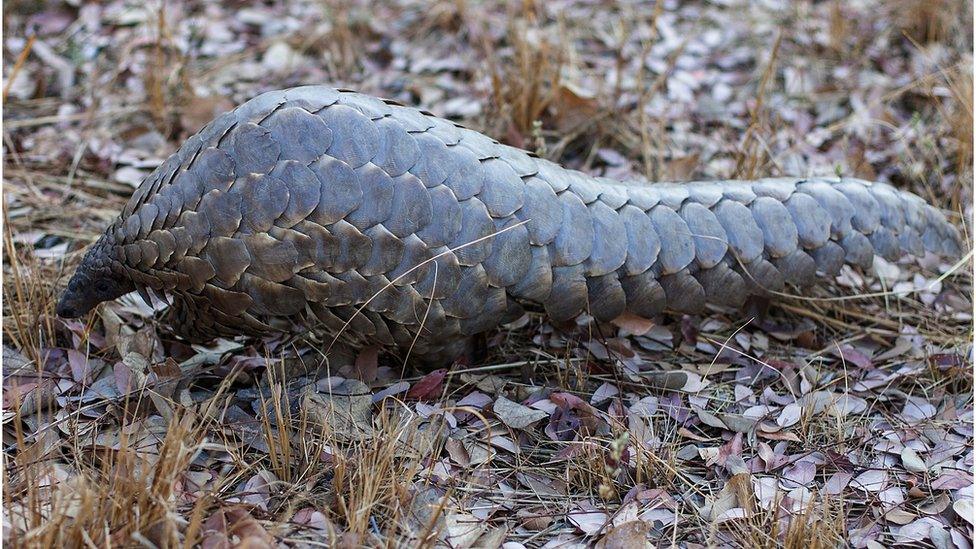
Pangolins are the only mammals in the world covered in scales
The scales are made of keratin, which is the same material found in a rhino's horn. They are so tough that even lions can't bite through them!
To protect themselves, pangolins can roll up into a near-perfect ball, covering their faces and undersides.
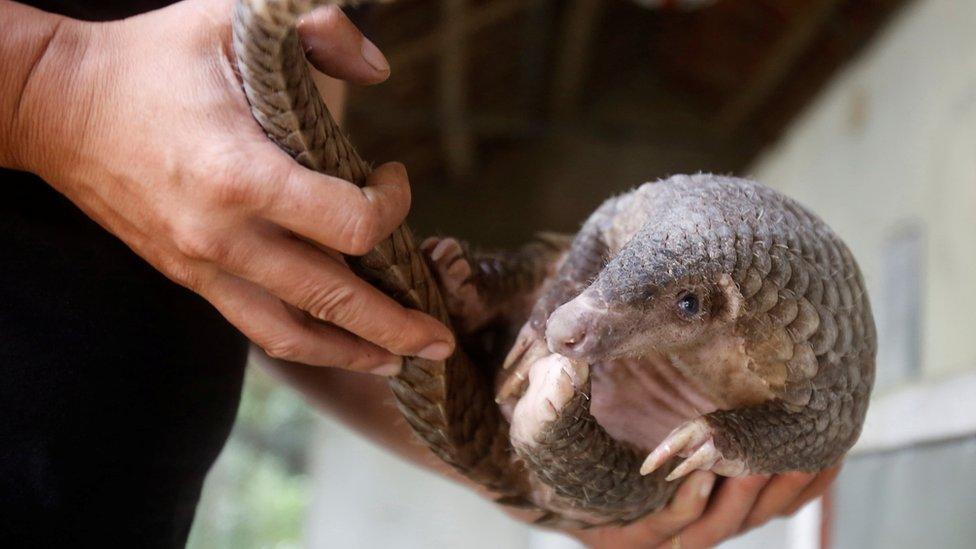
A pangolin's tongue can be longer than its body
When fully extended, a pangolin's tongue can reach over 40cm! Pretty useful given they don't have any teeth so they can't chew.
They use their sticky tongue instead to collect insects for food.
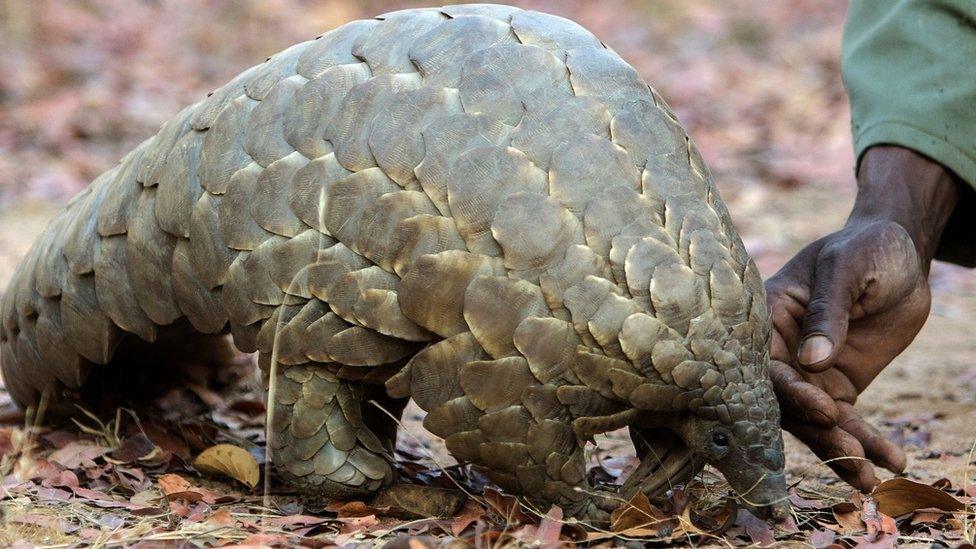
Pangolins don't have very good eyesight
This is because they have very small eyes compared to size of the rest of their body.
But no need to wear a pair of specs - they can use their incredibly strong sense of smell and hearing to find food.
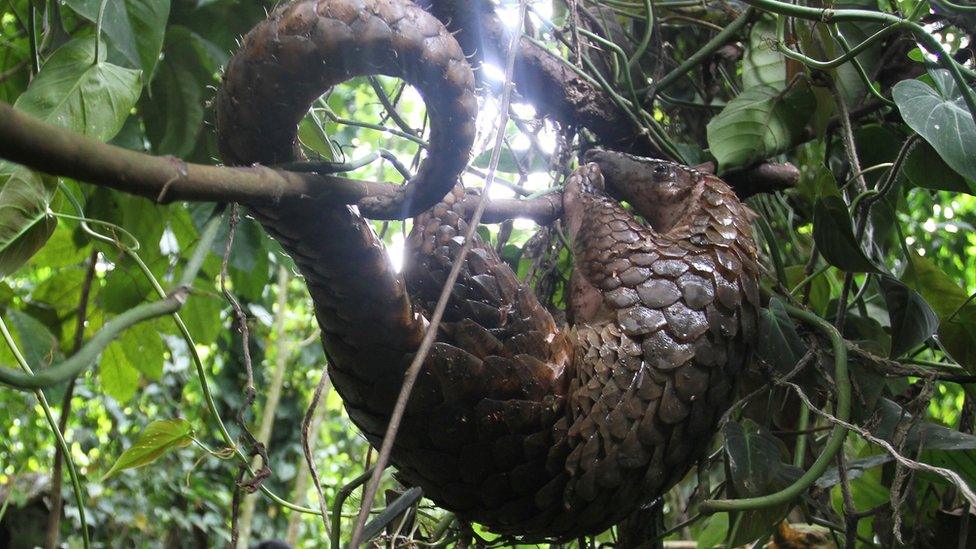
They can live in trees or in the ground
Some pangolins live in trees whereas others dig and live in holes in the ground.
Species like the African long-tailed pangolin climb trees by using their claws to grip on to overhanging branches, while others use their claws to dig holes in the ground.
Some holes that have been found are so large, even a human could stand up in them.
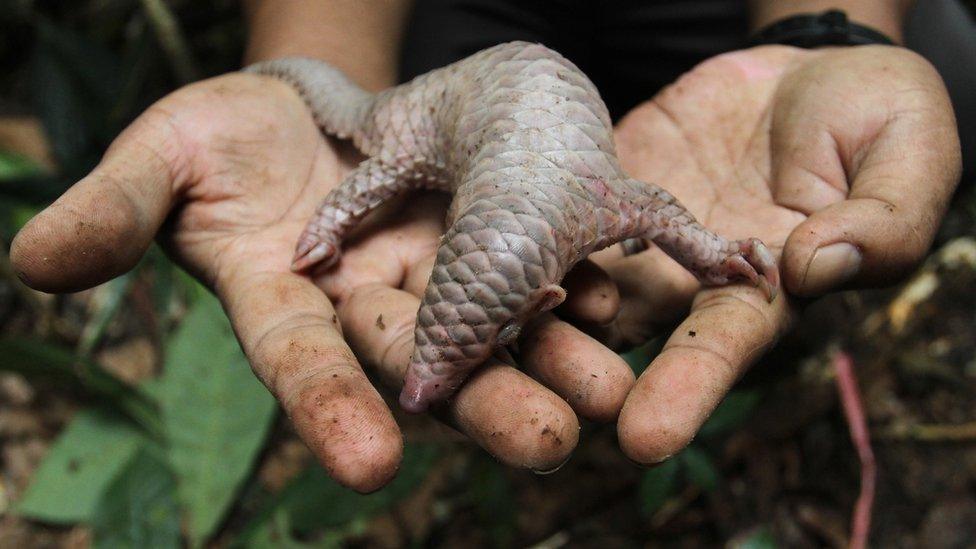
There are actually eight different species of pangolin
Four of the species are found in Asia and they're known as Chinese, Philippine, Malayan, and Indian pangolins.
The others are found in Africa and are called tree, giant ground, cape and long-tailed pangolins.
Two of the species are listed as critically endangered.
- Published12 May 2016

- Published23 November 2013

- Published11 May 2016

